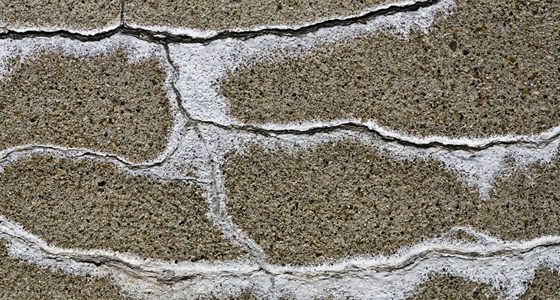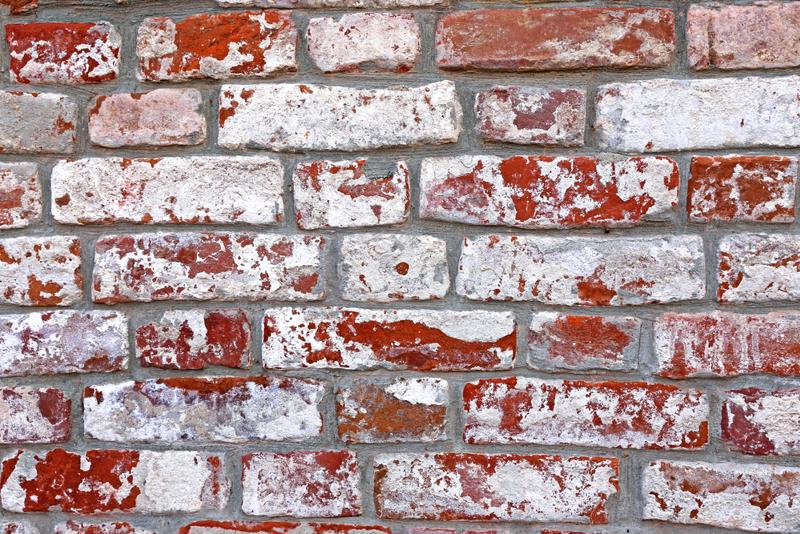
There are few things more frustrating than spending time, money and effort keeping your building in good shape, only to show up one day and find that your work has been undone. If you’re a facility manager and you notice an unsightly white residue forming on your windows and building exterior, it can feel like your maintenance and custodial efforts are being undermined right under your nose.
The good news is, that white residue isn’t the end of the world. It’s called efflorescence, and while it’s certainly a nuisance, it’s possible to remove this stain on your building’s otherwise picturesque appearance.
Read on to learn more about what efflorescence is, what causes it and what you can do to eliminate it.
 Efflorescence commonly forms on porous building materials like brick.
Efflorescence commonly forms on porous building materials like brick.What is efflorescence?
According to Delaware Quarries, efflorescence is sometimes cutely referred to as “whiskers.” But that adorable name doesn’t make it any less irritating of an issue to deal with. The white, powdery residue you see on your building is formed by mineral deposits in the stone, concrete, brick or stucco. Any porous building material – even wood – can display efflorescence, as long as water is present. This is because it’s water that is responsible for dissolving salts and other minerals within the building materials. When the water – that comes from rain, groundwater or any other source- evaporates, it leaves behind the telltale chalky white residue that building managers all over the country love to hate.
According to a report from the Masonry Society Journal, efflorescence requires three specific conditions to form:
- There must be water-soluble salts and minerals present in the building materials.
- Moisture must exist in sufficient quantities to dissolve the salts into a solution.
- The solution must be able to make its way to the surface of the building, where the water can evaporate, leaving behind the efflorescence as a byproduct.
Where can efflorescence form?
Because of the three specific conditions that must be met for efflorescence to form, the phenomenon can only occur in certain building materials. Specifically, the surface of the building must be constructed from a porous substance, since otherwise the water wouldn’t be able to reach the surface and evaporate. This means that any porous material, such as concrete, clay brick, stucco or wood can possibly result in efflorescence. This of course also requires the material to be located somewhere where sufficient moisture accumulation is possible.
Is efflorescence harmful?
Generally speaking, the efflorescence itself isn’t harmful to your building’s structural integrity. Despite what you may think, it’s not a sign that your walls or exterior are dissolving or corroding – the white powder is merely a collection of mineral salts already contained in the material.
It’s worth noting, however, that while efflorescence isn’t inherently harmful, it is an indication that there is moisture accumulating in your walls, which can likely point to a larger problem.
“Remember, without moisture, efflorescence can’t form.”
How can efflorescence be removed?
More good news: Efflorescence isn’t particularly difficult to remove, provided you do so early enough. In fact, according to the U.S. General Services Administration, removing efflorescence from your building’s surface doesn’t require any tools more complex than clean water, a hose nozzle and a brush with firm, nonmetallic bristles. Just be sure to address the cleanup as soon as you can after noticing the efflorescence, as if left to sit, carbon dioxide in the air can react with the salts in such a way as to remove their water-soluble property. Once this happens, the efflorescence can’t be removed without the use of acidic solvents, which may damage your building facade.
While cleaning efflorescence isn’t difficult, its appearance is an indicator that there may be a leak in your building’s exterior that is allowing excess water into the wall. Remember, without moisture, efflorescence can’t form.
Preventing efflorescence from developing means keeping water and moisture out of the wall. The best way to do this is to treat your concrete, brick or stucco with a sealant. This sealant works in two ways: It prevents moisture from rain or groundwater from seeping into the material, but it also keeps any water that is already inside the brick or concrete from making its way to the surface where it can evaporate.
Not all sealants are suitable for every type of material, and some can even create problems later. For example, the International Association of Certified Home Inspectors noted that some impregnating sealants can cause building materials to break during the harsh freeze-thaw cycles experienced in colder climates or during the winter season. For this reason, it’s recommended that you don’t try and manage the task of sealing your building materials yourself.
The building experts at Clean & Polish Building Solutions can help you identify efflorescence and any offending leaks that may be causing the issue. They are also available to seal your building exterior for you, ensuring that the problem doesn’t happen again and preventing you from worrying about carrying out the operation correctly.


